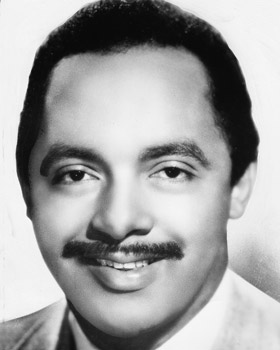Perez Prado
Damaso Perez Prado was known as the "King of the Mambo" in the 1940s and '50s.
Historians consider Perez Prado one of the founders of mambo, a bouncy blend of tropical music that became popular after the war in such cities as Los Angeles, New York and Chicago. Popular songs of the idiom included "Cherry Pink," "Patricia" and "Mambo No. 8."
(The mambo "Cherry Pink and Apple-Blossom White" was the No. 1 record in the country for 10 weeks in 1955, a record surpassed only by Elvis Presley's "Don't Be Cruel" the following year.)
Others of his hugely popular songs included "Que Rico Mambo" (How Magnificent Mambo), "Rico, Caliente y Sabroso" (Delicious, Hot and Tasty), "Norma la de Guadalajara" (Norma, the Woman from Guadalajara) and "Mambo del Taconazo" (Foot-Stomping Mambo).
Perez Prado's music was featured in Federico Fellini's historic film "La Dolce Vita."
The dance known as the mambo is similar to the cha-cha. It features a syncopated beat with lots of hip motion and is dominated by trumpets and drums.
Perez Prado, affectionately called "seal face" by his fans for the barking sound he made while playing his music, was in some ways a prisoner of his own success. He tried to change his musical style after the mambo craze died down, but ardent fans kept demanding the rhythms they were used to.
Related stars
|
|





One thought about Perez Prado
Share a thought about Perez Prado